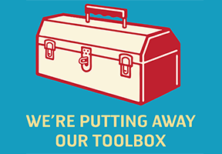What RSS is and what it isn’t
I have noticed many people are confused by what happens when they click the RSS icon on their website. I think this confusion stems from people forgetting exactly what RSS is, in combination with the placement of the RSS icon in the same place as other social media icons.
What RSS is
The Wiki article puts it very succintly.
RSS (originally RDF Site Summary, often dubbed Really Simple Syndication) is a family of web feed formats used to publish frequently updated works—such as blog entries, news headlines, audio, and video—in a standardized format.[2] An RSS document (which is called a “feed”, “web feed”,[3] or “channel”) includes full or summarized text, plus metadata such as publishing dates and authorship.
RSS feeds can be read using software called an “RSS reader”, “feed reader”, or “aggregator”, which can be web-based, desktop-based, or mobile-device-based. The user subscribes to a feed by entering into the reader the feed’s URI or by clicking a feed icon in a web browser that initiates the subscription process.
Once subscribed to the feed in the RSS reader, the visitor no longer needs to visit your website in order to read your updates. The former visitor now becomes a reader of your content as it is syndicated to their RSS reader. This makes reading the content of her favorite websites more convenient by bringing just the relevant content from those websites into once place, the RSS reader.
Whether this is a good thing for your website is up for debate. Do you really want people reading your website’s content without actually visiting your website? Anyways…
The RSS icon
The RSS icon was probably the first “social media icon”. It’s that small orange icon with the concentric semi-circles found in the footer of a website, inviting the visitor to “click to subscribe”. Over time, more social media icons appeared in this space inviting clicks to things like twitter feeds and facebook pages.
This is probably why the confusion about RSS began.
People used to clicking the twitter and facebook icons in the footers of websites started clicking the RSS icon out of curiosity, and were probably disappointed by what they got.
Wikipedia mentions clicking a feed icon in a web browser that initiates a subscribe process. In order for the subscribe process to occur, the visitor clicking the rss icon must have an RSS reader installed on her computer which will detect the icon click and handle the subscription. If no such reader is installed, and the web-browser doesn’t also behave as an RSS reader (some do), the visitor will most likely be greeted by a screen full of XML that looks something like this:
<?xml version="1.0" encoding="UTF-8" ?>
<rss version="2.0">
<channel>
<title>RSS Title</title>
<description>This is an example of an RSS feed</description>
<link>http://www.someexamplerssdomain.com/main.html</link>
<lastBuildDate>Mon, 06 Sep 2010 00:01:00 +0000 </lastBuildDate>
<pubDate>Mon, 06 Sep 2009 16:45:00 +0000 </pubDate>
<ttl>1800</ttl>
<item>
<title>Example entry</title>
<description>Here is some text containing an interesting description.</description>
<link>http://www.wikipedia.org/</link>
<guid>unique string per item</guid>
<pubDate>Mon, 06 Sep 2009 16:45:00 +0000 </pubDate>
</item>
</channel>
</rss>
It’s quite a different action than that which occurs when clicking on the twitter or facebook icon, which simply opens the twitter or facebook page in the browser.
What RSS isn’t
Because of the placement of other social media icons near the RSS icon, all of which lead to other web pages, people who are not familiar with RSS naturally expect the RSS icon to do the some thing as the others. Open the “RSS web page”. Unfortunately, as I’ve just discussed, there is no such thing. There may be web-based RSS readers such as Google Reader, but RSS isn’t a web page. It’s a bunch of XML gobbledy-gook meant to be read by a machine. A machine running an RSS reader!
My radical solution
Since the social media icon context has changed from meaning click here to subscribe to my RSS feed with your RSS reader, to meaning click on these icons to read my tweets and updates on social media websites, I suggest surrendering all of the social media icon space on your website to social media website. RSS icons aren’t really necessary, anyway, as these days hidden code within a website can tell an RSS reader what to subscribe to. This allows you to subscribe to a website’s RSS feed simply by entering the website’s address. It would eliminate the confusing RSS icon and make all social media icons behave the same way.
I realize this post is a little technical, and hard to understand if you’ve never used an RSS reader before. Here are a couple of links to popular readers so that you can try them out.
Google Reader (a web-based RSS reader)
RSS owl A stand-alone desktop application RSS reader for most platforms.
